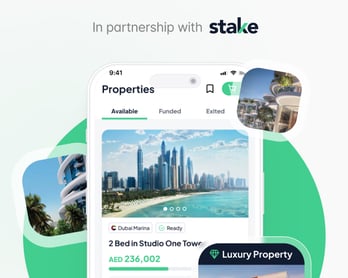Everything you need to know about virtual worlds, virtual land, and the metaverse.
Now, more than ever, people are turning to alternate, virtual realities to complement their existence in the real world. These worlds, or metaverses, are becoming established places in which people can socialize, explore, play games, and even make money. In many ways, the metaverse acts as a continuum of the real world, in that many activities that can be carried out in real life now extend to the metaverse. For example, now, you can even order Dominos pizza in the metaverse of Decentraland, and get it delivered to you in real life.
Defining the metaverse
Metaverses are parallel digital universes that offer a set of unique experiences to users. These virtual worlds are accessible via a computer, virtual reality headset, or a smartphone. Augmented reality, virtual reality, the internet, and blockchain are giving new meaning to the metaverse, where significant advancements in all of these areas are facilitating new, exciting, and even profitable virtual worlds.
The metaverse is an immersive virtual space that seamlessly combines planned elements with spontaneous components, all influenced by a community of engaged users. Digital real estate forms the foundation of the metaverse, as these plots of virtual land allow users to develop and create whatever they want on these parcels. The metaverse allows for user generated experiences and content, similar to virtual world Second Life, and to the film “Ready Player One.”
The Blockchain
One crucial component of the metaverse is the ability to move both your avatar and assets seamlessly and instantly throughout various virtual worlds. Blockchain technology is what makes this possible. The blockchain is a distributed digital ledger that stores data across an entire network, making it publicly verifiable and unchangeable, rather than centralized in one location or with one party. Co-founder and CEO of The Sandbox, Arthur Madrid noted that “The idea of blockchain in the metaverse is to build a new kind of digital asset, to create based on ownership and governance.” This decentralized ownership of the metavrse is what is attracting users in droves. Powered by the blockchain, these virtual worlds allow users to create, experience, and monetize virtual reality content and applications within self-contained economies that not only mimic real-world interactions, but now have practical, real-world applications.
Is the metaverse a big deal right now?
According to data from Statista, as of January 2021, there were 4.66 billion active internet users worldwide, with the vast majority of these people (93%) accessing the Internet via a smartphone. Because the internet is the entry point to any metaverse, the total addressable market is essentially anyone with internet access. This accessibility is a game changer, and has already played out in the following ways:
- Epic Games (the company that birthed Fortnite) has garnered significant revenue from its global user base of over 350 million who have spent over billions of dollars in aggregate on in-game purchases. Though Fortnite isn’t blockchain-based, in the game, users must exchange dollars for virtual currency, or V-bucks.
Roblox (another immersive game platform) was recently valued by $4 billion, with its latest round led by Andreessen Horowitz.
In 2017, Decentraland, an Ethereum-based metaverse completed its initial coin offering, or ICO, and raised approximately $24 million. Decentraland allows users to buy virtual land and NFT goods, with land owners having control over their parcels, allowing them to develop and build as they wish.
In December 2019, an Epic Games official, Mr. Sweeney said, “Fortnite is a game, but ask that question again in 12 months.” Because there are so many subscribers and because the environment is so immersive, this game is seen as an entry port into the concept of the Metaverse. At first, the concept was to merely create a great game. Now, the concept has morphed into creating a new way for people to interact with their virtual world in digital economies. Though games like Fortnite and Minecraft are not currently supported by the blockchain, the transition to a crypto-based foundation is entirely feasible, and almost inevitable. As games with such brand cache and customer loyalty potentially enter the crypto space, they are likely to usher in an entirely new community of their existing users, only catalyzing the mass adoption of crypto-based metaverses.
Non-fungible tokens (NFTs) in the metaverse.
NFTs, or non-fungible tokens, are what make the metaverse possible. An NFT is a cryptographic asset that signifies ownership of unique things, such as digital land, digital art, digital clothing, music, an in-game asset, among many others. The key feature of an NFT is that it is not interchangeable, or fungible. Therefore, an NFT is inherently unique, which creates scarcity value—the data underlying each NFT makes its existence entirely exclusive and one-of-a-kind.
Virtual land in the metaverse is represented by an NFT, and prices are beginning to rival real-world real estate prices. In February 2021,
A piece of virtual land on blockchain-based Axie Infinity sold for a record-breaking $1.5 million in Ether, surpassing previous NFT records at the time. The buyer of this plot of digital real estate noted that “Genesis land plots are the rarest and best-positioned plots in Axie Infinity,” underscoring the parallels between real-world real estate investing and digital real estate investing.
Big Brands are taking their talents to the metaverse
As the NFT surge continues to dominate headlines, such as infamous Beeple’s $69 million digital art sale through esteemed auction house Christies, it’s no surprise that big brands and institutions are starting to make their mark on the metaverse. Established brands are capitalizing on their customer loyalty in the real world, and finding new ways to engage fans in the metaverse. For example, Adidas recently collaborated with Karlie Kloss inside Decentraland, where attendees could get a free pair of (digital) Adidas shoes for their avatar to wear. For brands, metaverse engagement is a significantly lower cost way to reach new users, engage existing customers, and demonstrate their ability to bridge the divide between the physical and digital world.
Importantly, as digital art, digital fashion, and gaming continue to rise in popularity, so too will the need for digital land. Where will digital art be displayed? Virtual galleries in the metavrse. Where will digital socks and sneakers be worn? On avatars in the metaverse. Where will games be played? Interactive setting in the metaverse. It is all related, and it all converges in virtual land in the metaverse.
The metaverse is just starting to heat up.
It is still early innings in the metaverse, and as technological advancements in AR/VR continue to play out, it is likely that the metaverse will play an increasingly important role in our lives—socially, economically, and culturally. We believe that the metaverse presents an attractive opportunity for investors who are looking to diversify and align themselves with the trends playing out in the crypto community today.
Learn more about digital real estate investing in the metaverse at www.republicrealm.com.
This piece is provided by Republic Compound LLC d/b/a Republic Real Estate and is for informational purposes only.







 Oops! We couldn’t find any results...
Oops! We couldn’t find any results...







